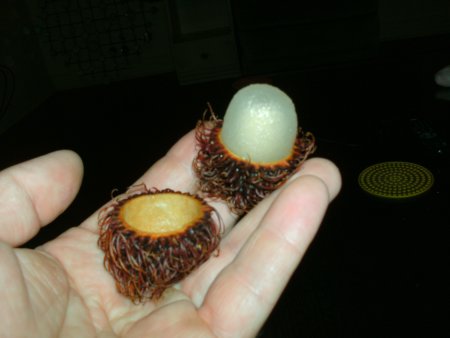In a basket on a shelf in a discrete corner of the produce section of the local organic grocer, one finds the rambutan.
You think to yourself, this looks interesting. It’s red and spiny. It has that particularly tropical look to it that seems so out of place in an American supermarket.
You want to buy it, just to see what’s inside, but there’s a dilemna. It’s too small to make a satisfying snack with just one. But the price makes it too risky to buy more than one. You remember previous disappointments with tropical fruits: the stunningly mediocre starfruit, the always rotten durian.
You buy one, take it home, and discover that there is a rambutan.com. There are no calls to action or lead-generating conversation forms, there are simply instructions on how to make the transition from a closed rambutan to one that is open and ready to eat.
It proves to be not dissimilar to its close relative the lychee, a crisp orb of translucent flesh. The fruit tastes familiar, but it is impossible to say how. It seems like a ghost of all other fruits.
You plant the pit in a cup of potting soil and leave it outside.
Then a squirrel digs the pit up. Maybe it smelled the rambutan pit and decided to eat it. Maybe it buried the pit somewhere and forgot it, and someday people will wonder at the strange tree with the fuzzy fruit.

if you’d just get off your backside and come visit us in se asia you could try some of these tropical fruits *fresh*. trying to explain how fresh tropical fruit really tastes is like trying to explain sex to a virgin. mangosteen has my vote for best fruit ever.